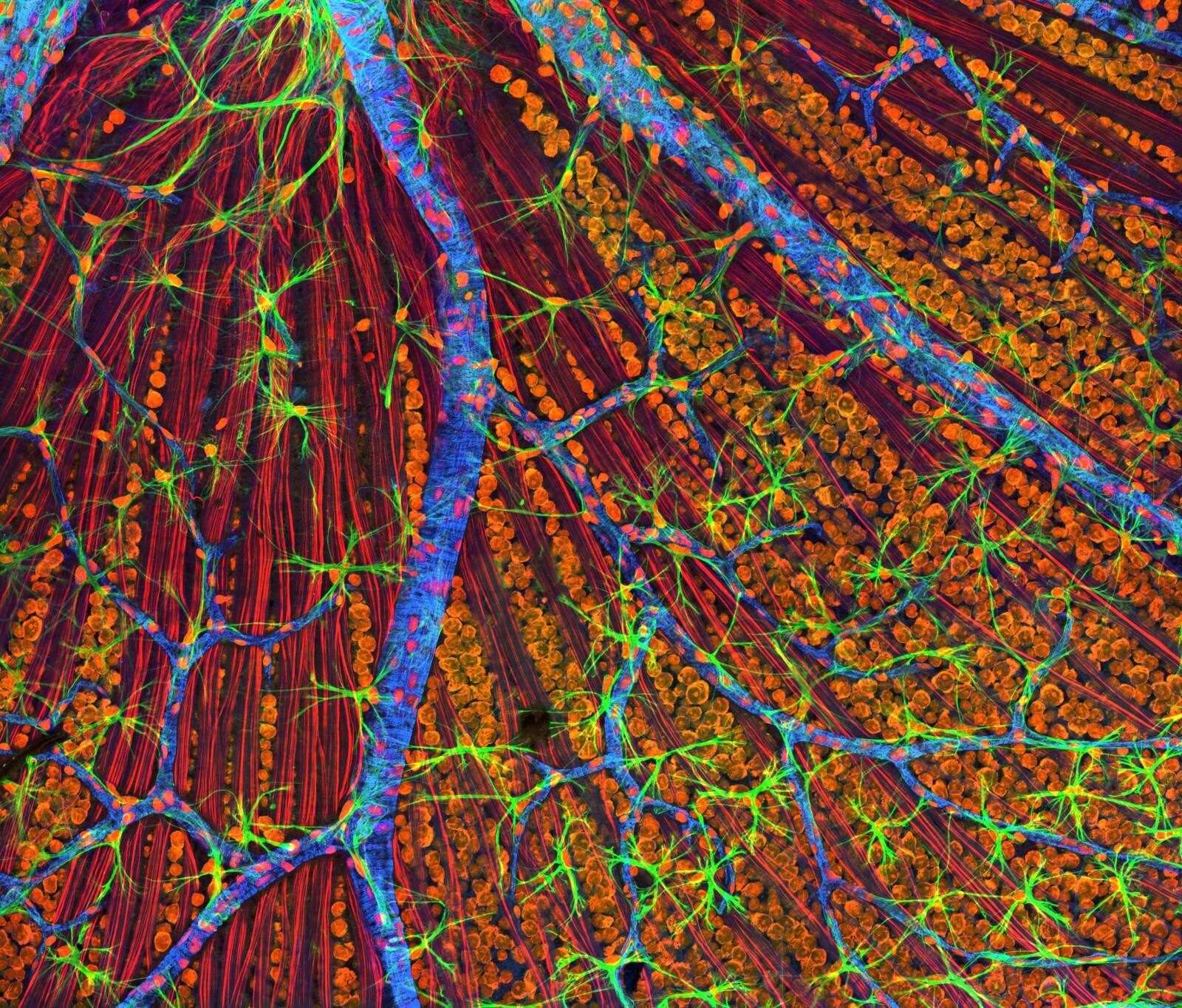Bladder Cancer: Unveiling the Silent Killer
Bladder cancer, often unnoticed until advanced stages, is a significant health concern. As the sixth most common cancer in the U.S., understanding its types, symptoms, risk factors, and treatment options is vital. This article offers an in-depth exploration of these aspects, enabling readers to recognize early signs, understand risk factors, and comprehend treatment modalities. Ultimately, we aim to shed light on this 'Silent Killer' and inspire hope through recent advances in bladder cancer research.

Key Takeaways
- Bladder cancer is the sixth most common cancer in the U.S. and often goes unnoticed until advanced stages.
- Genetic predisposition plays a key role in bladder cancer, and genetic testing and counseling are important in high-risk populations.
- Recent advancements in bladder cancer research offer hope for improved prognosis, with immunotherapy and targeted therapy providing new avenues for patient care and recovery.
- Early recognition of bladder cancer symptoms, such as pain during urination and presence of blood in urine, improves chances of successful treatment.
Understanding Bladder Cancer: An Overview
The silent and often overlooked threat, bladder cancer, is a complex disease that manifests in various forms, each with its unique set of symptoms, causes, and risk factors, requiring specific diagnostic methods and treatment approaches. A key determinant of bladder cancer is genetic predisposition. The presence of specific genetic markers can significantly elevate an individual's risk of developing this malignancy. This underlines the importance of genetic testing and counseling in high-risk populations. Meanwhile, the landscape of bladder cancer treatment is rapidly evolving with the development of emerging treatments. These include targeted therapies that address specific molecular abnormalities in cancer cells, and immunotherapies that boost the body's natural defenses against cancer. Together, these advancements promise an improved prognosis for bladder cancer patients.
Categorizing Bladder Cancer: A Detailed Look
Diving deeper into the realm of bladder cancer, we will now explore its various types and categories, each defined by unique characteristics and implications for diagnosis and treatment. Bladder cancer subtypes primarily include Urothelial Carcinoma, the most common variant, and others such as Squamous Cell Carcinoma, Adenocarcinoma, and Small Cell Carcinoma. These subtypes differ in their origins and, therefore, present unique challenges for treatment. Additionally, bladder cancer is categorized into Non-Muscle-Invasive and Muscle-Invasive forms, which signify the extent of cancer spread within the bladder. Treatment options for advanced bladder cancer typically involve a combination of surgery, radiation therapy, and chemotherapy, with recent advances in immunotherapy and targeted therapy providing new avenues for patient care and recovery.
Recognizing the Symptoms: Signs to Watch Out For
In understanding bladder cancer, one's ability to recognize early symptoms greatly improves the chances of successful treatment and survival. Bladder cancer awareness, along with early detection methods, play pivotal roles in managing bladder cancer symptoms. Pain during urination or the presence of blood in urine are among signs that shouldn't be ignored. With advancements in bladder cancer research, emerging treatments are available, offering support for bladder cancer patients through alternative therapies. The impact of bladder cancer on quality of life can be mitigated through holistic approaches, including the role of diet and nutrition in bladder cancer management. Such strategies, combined with traditional treatment, can be a powerful tool in the fight against this silent killer.
Risk Factors of Bladder Cancer: What Increases Your Chances
Several factors can increase one's risk of developing bladder cancer, including lifestyle choices, environmental exposures, and genetic predispositions. Smoking, being a significant risk factor, contributes to about half of all cases. Exposure to certain industrial chemicals also enhances the risk. Chronic bladder infections and a family history of bladder cancer add to the susceptibility. Preventing bladder cancer thus involves reducing the risk through healthy lifestyle choices, such as quitting smoking and minimizing exposure to harmful chemicals. Furthermore, age, gender, and race play a role, with older, white males being most affected. Bladder cancer treatment options vary, and exploring alternatives is crucial for individualized care. These can range from surgery and radiation therapy to emerging immunotherapies.
The Role of Genetics in Bladder Cancer
Undeniably, genetic factors play a significant role in the development and progression of bladder cancer. The primary genetic influence includes specific genetic mutations that alter cell growth and division, making cells more susceptible to becoming cancerous. These mutations may be acquired throughout a person's life due to environmental factors or they may be inherited. Inherited risk factors contribute to a small portion of bladder cancers, and people with a familial history of the disease have an increased risk. Genetic testing can identify these inherited mutations, allowing for earlier detection and intervention. It is crucial to note that while genetics can raise the risk, other factors, including lifestyle and environmental influences, can significantly contribute to bladder cancer's onset.
The Diagnostic Process of Bladder Cancer
Through a combination of medical history analysis and physical examinations, and with the aid of specific diagnostic tests, healthcare professionals can accurately diagnose bladder cancer. The importance of early detection in bladder cancer cannot be overstated. Early detection increases the chances of successful treatment and survival. Diagnostic tests like urinalysis, urine cytology, cystoscopy, and biopsy are crucial. Furthermore, the role of imaging techniques in the diagnosis of bladder cancer is vital. Ultrasound, computed tomography (CT) scans, magnetic resonance imaging (MRI), and positron emission tomography (PET) scans provide detailed images of the bladder, aiding in the detection of any abnormalities or tumors. These imaging techniques also assist in staging cancer, determining its extent and the most appropriate course of treatment.
Unpacking the Stages of Bladder Cancer
After diagnosis, understanding the stages of bladder cancer is paramount, for it guides the treatment plan and provides insight into prognosis. The staging methods range from Stage 0, where the cancer is localized in the bladder lining, to Stage IV, where cancer has spread to distant parts of the body. These stages help doctors comprehend the severity of the disease, thus informing treatment outcomes. Stage 0 and I diseases are generally treated with surgery, while stages II to IV may require a combination of surgery, radiation, chemotherapy, or immunotherapy. The five-year survival rate varies dramatically, from 96% in Stage 0 to 15% in Stage IV. Understanding these stages allows patients to engage more effectively in their care, fostering hope and resilience in their fight against this silent killer.
Surgical Treatments: Procedures and Outcomes
In the realm of bladder cancer treatment, surgical interventions serve as a primary option, and the methods employed vary based on the disease stage and the patient's overall health. Procedures range from transurethral resection for non-muscle-invasive cancers to radical cystectomy for invasive disease. Despite their effectiveness, complications of surgical treatments can include infection, blood clots, and difficulties with urinary diversion techniques. Long term effects of surgical treatments may lead to changes in urinary function and sexual health, requiring ongoing management and support. Nevertheless, these interventions often yield positive outcomes, significantly improving survival rates and quality of life. It is crucial that patients are made fully aware of the potential risks and benefits before undertaking these procedures.
Radiation Therapy: Its Role and Effectiveness
Radiation therapy, a potent tool in the arsenal against bladder cancer, employs high-energy rays to annihilate cancer cells and shrink tumors, thereby playing a pivotal role in treatment strategies. While effective, radiation therapy's side effects, such as fatigue, skin reactions, and urinary and digestive problems, may pose challenges. Yet, its long-term effects are relatively lesser compared to invasive surgeries, making it a preferred choice for certain cases. When compared to other treatment options, radiation therapy stands out for its precision in targeting tumors, often used in conjunction with chemotherapy for improved outcomes. Nevertheless, the choice of treatment is multifaceted, involving factors like the patient's overall health, cancer stage, and personal preference, underscoring the importance of tailored treatment plans.
Chemotherapy: When and Why It’s Used
As an integral component of bladder cancer treatment, chemotherapy utilizes drug combinations to destroy cancer cells, and depending on the cancer stage and patient health, it is employed either before surgery to shrink tumors or after to eradicate any remaining cells. This approach, however, is not without its challenges. The side effects of chemotherapy can include nausea, fatigue, and susceptibility to infection, requiring careful management to maintain the patient's quality of life. It is also worth noting that chemotherapy is often used in combination with other treatment modalities, such as surgery or radiation therapy, to enhance its effectiveness. This multi-modal approach has been shown to improve patient outcomes, underlining the vital role of chemotherapy in the fight against bladder cancer.
Immunotherapy: A New Hope in Treatment
Harnessing the body's immune system to fight cancer, immunotherapy presents a new frontier in bladder cancer treatment, and it offers hope where traditional therapies may fall short. The recent immunotherapy advancements have led to the development of drugs that boost the immune system's ability to identify and destroy cancer cells. While these advancements represent a significant step forward, they are not without challenges. The side effects of immunotherapy, including fatigue, fever, and skin reactions, can be severe, necessitating careful management. Nevertheless, the potential of immunotherapy to improve survival rates and quality of life for bladder cancer patients underscores its importance in the ongoing battle against this silent killer.
Targeted Therapy: a Closer Look at This Approach
While immunotherapy has emerged as a promising frontier in bladder cancer treatment, it is of critical importance to also explore the potentials of targeted therapy, which focuses specifically on cancer growth-related molecules. This personalized treatment approach seeks to inhibit cancer growth by interfering with specific proteins or enzymes that stimulate the growth and division of cancer cells. Advancements in targeted therapy are steadily improving outcomes, offering hope to patients who have not responded to conventional treatments. High-throughput technologies are helping identify molecular targets in individual patients, paving the way for more effective and less toxic therapies. As we continue to uncover the complex molecular landscape of bladder cancer, targeted therapy is becoming an increasingly significant weapon in our armamentarium against this silent killer.
The Role of Lifestyle Changes in Management of Bladder Cancer
Beyond the realm of conventional treatments and therapies for bladder cancer, lifestyle changes play a pivotal role in managing the disease, and can significantly contribute to improved patient outcomes. Lifestyle modifications such as adhering to a balanced diet, regular physical activity, reducing alcohol consumption, and quitting smoking can aid in fortifying the body's defense mechanisms against the disease. These changes can also enhance the efficacy of conventional treatments and reduce the risk of recurrence. Additionally, alternative therapies like yoga, meditation, and acupuncture, can be beneficial in managing stress and enhancing quality of life. They complement traditional treatments, offering holistic care. Embracing these lifestyle changes is highly recommended for individuals diagnosed with bladder cancer, as part of their comprehensive treatment plan.
Coping With Bladder Cancer: Emotional and Psychological Aspects
Dealing with bladder cancer involves not just managing its physical symptoms, but also addressing the emotional and psychological challenges that come with the diagnosis. It's crucial to employ effective coping strategies to maintain mental well-being. These strategies can include therapeutic interventions like cognitive-behavioral therapy, stress management techniques, and mindfulness practices. Alongside these individual practices, the importance of support networks cannot be overstated. These networks, which may include family, friends, healthcare professionals, and fellow patients, provide emotional and practical support. They offer a platform to share experiences and feelings, reducing feelings of isolation. Encouragingly, many medical centers now offer psychosocial support services to help patients navigate the emotional terrain of their diagnosis.
The Future of Bladder Cancer: Recent Advances and Hope for Cure
Innovations in medical research are propelling the field of bladder cancer treatment forward, offering newfound hope for a cure and improved quality of life for patients. Recent breakthroughs in molecular biology have led to the discovery of new biomarkers and therapeutic targets, revolutionizing our understanding of disease progression and patient prognosis. Moreover, emerging therapies such as targeted therapy and immunotherapy are demonstrating promising results in early-stage trials. These innovative approaches not only aim to eradicate the disease but also to minimize the side effects traditionally associated with bladder cancer treatment. While there's still a long way to go, these advancements signify a positive movement towards a future where bladder cancer can be effectively controlled, if not completely cured.
Frequently Asked Questions
How Does Bladder Cancer Affect Kidney Function?
Bladder cancer can affect kidney function if the cancerous cells block the ureters, tubes that carry urine from the kidneys to the bladder. This can cause a backflow of urine, leading to kidney damage. Symptom recognition is crucial for early intervention. Diagnostic methods, such as blood tests to assess kidney function and imaging tests to detect any blockages, can aid in assessing the impact of bladder cancer on kidney function.
Can Bladder Cancer Be Prevented Through Diet and Nutrition?
While there is no definitive evidence that bladder cancer can be completely prevented through diet and nutrition, certain dietary adjustments and nutritional supplements may potentially reduce the risk. Consuming a diet rich in fruits and vegetables, limiting processed meats and red meat, and maintaining a healthy weight can contribute to overall health. Nutritional supplements like vitamins A, C, E and selenium may also provide some protective benefits. However, more research is needed to substantiate these claims.
How Does Bladder Cancer Impact Sexual Health and Fertility?
Bladder cancer can significantly impact sexual health and fertility. Men may experience erectile dysfunction, while women could face changes in their sexual function due to treatment. Fertility can also be affected, particularly if treatment involves removal of reproductive organs. Moreover, the diagnosis and treatment of bladder cancer can trigger psychological effects such as anxiety and depression, which can further complicate sexual health. It may also lead to shifts in relationship dynamics, necessitating open communication and support.
What Is the Survival Rate for Each Stage of Bladder Cancer?
The survival rate for bladder cancer varies by stage. For localized bladder cancer (stage I), the 5-year survival rate is approximately 88%. For regional spread (stage II and III), it's about 63% and 46% respectively. For distant spread (stage IV), it's around 15%. Genetic factors can influence these rates, with certain mutations leading to more aggressive disease. Diagnosis techniques, such as cystoscopy and imaging, are crucial in accurately determining the stage.
Are There Any New or Emerging Treatments for Bladder Cancer Currently Being Researched?
Emerging treatments for bladder cancer are being extensively researched. Significant advancements in immunotherapy, utilizing the body's own immune system to fight cancer, are showing promise. Additionally, genetic profiling studies are aiding in the development of targeted therapies, which attack specific genetic changes in cancer cells. These approaches aim to increase effectiveness and reduce side-effects, providing new hope for bladder cancer patients. Continual research is critical for refining these treatments and discovering new ones.
Conclusion
In conclusion, bladder cancer, a significant yet often overlooked health concern, warrants comprehensive understanding and attention. Awareness about its types, symptoms, risk factors, and potential treatments plays a crucial role in early detection and intervention. While advancements in targeted therapies offer promising outcomes, lifestyle modifications and coping strategies are equally important. With recent breakthroughs in research, there is mounting hope for more effective treatments and a potential cure for this 'Silent Killer'.

This post has been generated by AI and was not reviewed by editors. This is Not legal advice. Please consult with an attorney.




